Decorating With Paint Effects
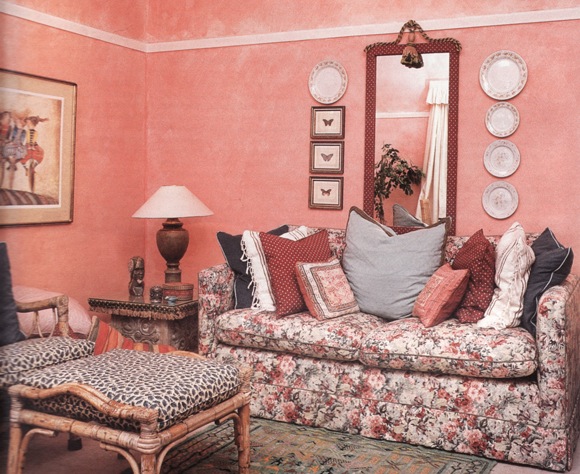
This simple country look is achieved by washing the walls with a rose hued paint diluted 4:1 with water.
Picture © Janek Szymanowski
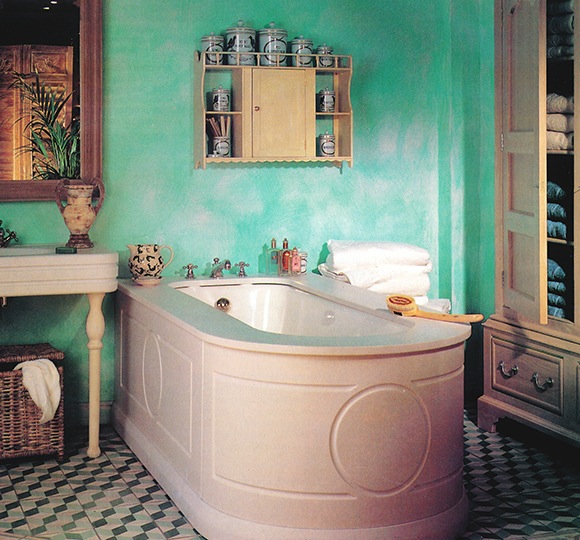
Broken color paint effects make an exhilarating change from flat color. Here, the conspicuous dappling of the turquoise paint on the color washed walls and ceiling in this bathroom is truly refreshing.
Most colorful paint effects, like sponging, dragging, ragging, stippling and color washing, have that marvelous hand-made quality which is ideal for the traditional country look. Their broken color gives a painted surface a unique richness and texture, which you can use to make a place or an object your own.
Decorative paint effects fall into two categories – the broken color and the faux or false techniques, that seek to replicate another material, like marble, stone or wood, in paint. Some paint techniques fall between the decorative and the illusory. Fantasy marbles in colors never found in nature are designed to amuse rather than deceive.
Other methods, such as rubbing or distressing, deliberately and crudely disrupt a paint finish to suggest the sort of wear incurred after years of use. This instantly gives any surface a sense of history, regardless of its age.
All these decorative paint effects are inexpensive ways of giving your home a new look, whether it is the glamour of fantasy marbles or the country-house charm of distressed paneling. The techniques are easy to master with practice, and are very satisfying to do.
Broken Color.
Colored surfaces created by working layers of paints on top of one another are far more complex and intriguing than those painted with flat colour straight from the tin. When seen from close-up, you can read the marks of the brush, the rag or the sponge, but when viewed from a distance the variations knit together so that you see either a gently textured surface or a single, blended color.
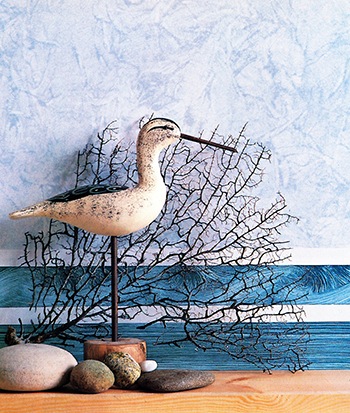
Broken paint effects possess a very textural quality. Here, with the help of ragged walls, dragged borderlines, a wooden shelf and beach trophies, the whole scene is set to conjure up seaside images.
Ragging.
In ragging, the top layer is worked with a rag, rather than a sponge. Paint is put on or taken off with a scrunched up rag, which imparts a crinkled texture to the surface. You can create a definite pattern or soften and blur the crinkles to achieve a much softer, subtler effect on walls and woodwork around the home.
Color washing.
For color washing (see main picture above), a glaze of color is applied over a pale background. The glaze is then wiped off or worked in with a brush or rag. The best effects are achieved by using a rhythmic movement of the arm so that you create an even mesh of broken color through which the base coat can be seen.
>
>
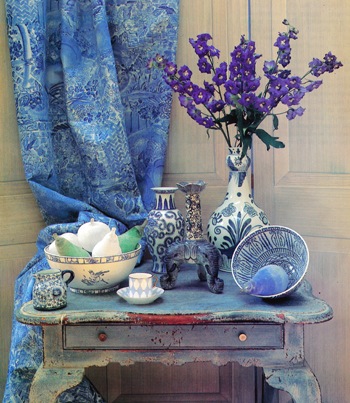
Dragging is all about leaving highly visible brush marks in the paintwork for their decorative interest. Here, the streaking provides a mellow background for a display of china.
Dragging.
In dragging, a brush is pulled across the surface to take off the glaze. To some extent, the resulting surface resembles wood grain and is often used on architraves and skirting boards, doors, paneling and furniture.
Reference: The Country Look—Decor & Crafts
Paint Techniques by Penny Swift & Janek Szymanowski


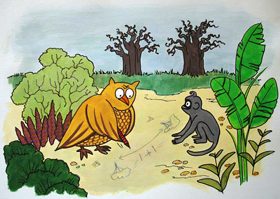

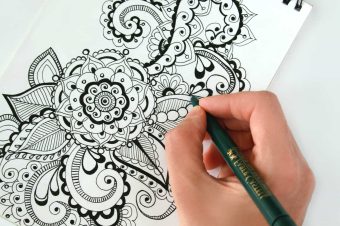
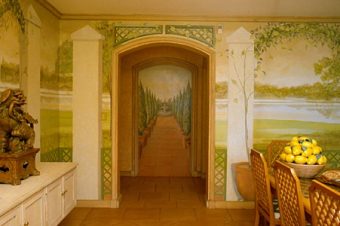
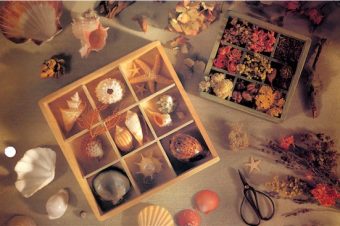
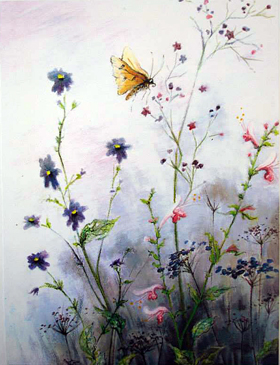

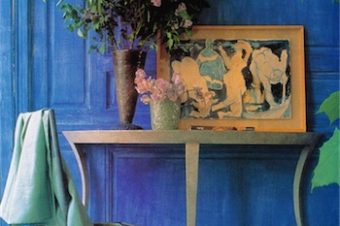
3 Responses
5 Steps For Sponged Flower Pots - Crafting DIY
[…] the paint with a natural sponge to achieve the sponged patterned background that adds to the overall effect […]
5 Easy DIY Headboard Ideas - Crafting DIY
[…] in one solid color, bold stripes or vibrant checks, to match your decor. Try experimenting with paint effects, such as ragging or sponging, for a more subtle […]
All About Decoupage Art - Crafting DIY
[…] the art of decorating an object by gluing colored paper cutouts onto it in combination with special paint effects, gold leaf and other decorative elements. Commonly, an object like a small box or an item of […]